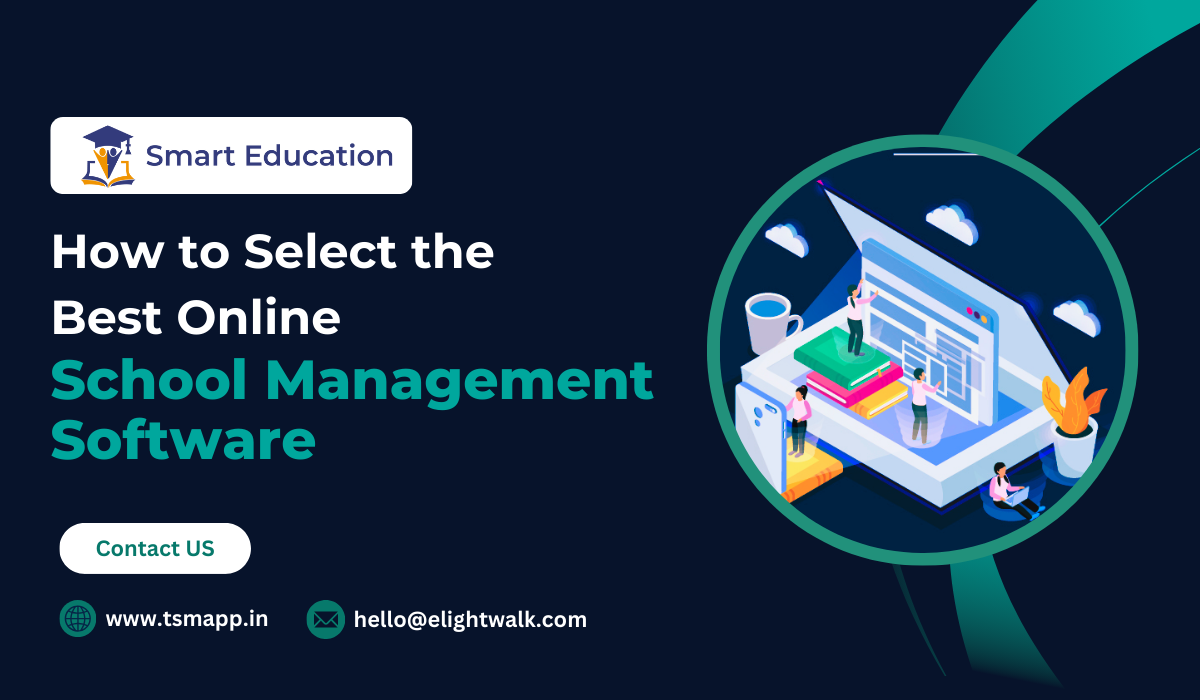
School management software is now vital to digital schools and tuition classes. It streamlines academic and administrative processes. It integrates data management. It helps schools with student records, attendance, and performance evaluations. It also saves the time of teachers and administrators as it reduces manual work by automating repetitive tasks. Also, the software improves interaction among parents, teachers, and students. This creates an integrated educational system which can be easily handled from digital devices.
Key Features to Look for in School Management Software
By first deciding what features are essential in school and management, it is possible to choose the best software for the organization. Make sure the system allows:
- Large Scope Functionality: This includes core activities such as attendance, fee collection, marks, and performance evaluation.
- Automation: Reducing human efforts and improving the speed of processes by making the system automated.
- Customizable Dashboards: Specific needs of the institution can be met through customization of the dashboards.
These features not only enhance efficiency but also provide the flexibility needed to adapt to unique institutional challenges.
Evaluating the User Interface and Accessibility
The ease of use and interface of the school management systems is vital for the prevention of resistance to change. In this case, the application should have the following characteristics:
- User-Friendly Interfaces: The use of visually pleasing designs that are easy to decode and comprehend, requiring minimal expertise level.
- Cross Device Use: Functional on a range of devices, including desktops, tablets, and smartphones.
- Users Anywhere: This feature permits access to the system’s data and functionalities by teachers, parents, and administrators in any location.
It is important that all users of the school management software software, regardless of their location, enjoy its features, provided these attributes are present.
Data Security and Privacy Considerations
On account of the content that risks exposure, student and institution information, these features go without saying. With good school management applications, one will get:
- Security: Protects the confidentiality of data so that no one can see or use it unless they are permitted.
- Data storage: Helps in the storage of data and allows for its reliable retrieval.
- Policy Abidance: This includes following up on the principles that are in place in specific locations, like GDPR, which aim at safeguarding users from breaches.
Making sure an information system has these features helps to maintain the trust users have in the system.
Customization and Scalability
Because of the sensitive data that is likely to be leaked, such as students and the institution, these features are self-evident. An effective student management system will provide one with:
- Adjustable Tools: Dashboards and reports that are customized to fit your business processes.
- Module Extensions: Possibilities for additional extensions as required.
- Flexibility: Ability to handle increasing student and staff populations seamlessly.
These features make the acquisition of the tuition management software a long-term investment that will meet current and future requirements.
Cost-Effectiveness and Value for Money
School management system price is one of the key considerations, but still, it should not affect the quality. Test the system for:
- Availability of Pricing: Provision of clear pricing within the structure for subscriptions or one-off payments.
- Features Available: Absence of additional charges for base price tools that are built-in expenses.
- Cost Effectiveness: Ability to save time and costs in downtimes to offset the cost of the initial outlay.
An affordable solution has good functionality and remains within the scope of affordability.
Integration with Other School Management System Modules
Integration capabilities are vital for seamless school operations. The software should synchronize with:
- Attendance and Grading Tools: For streamlined academic tracking.
- Library and Transport Management Systems: To support diverse operational needs.
- Third-Party Applications: Payment gateways, learning platforms, and more.
An integrated system simplifies workflows and enhances overall productivity.
Support and Training for Staff and Administrators
Such a level of support makes it possible to work with the software productively. Choose agencies with:
- Step-by-Step Introduction: Basic training and seminars designed to assist users with operating the system.
- User Manuals: A simple guide on troubleshooting and the cause of the problem.
- 24/7 Support: An outline of the process of dealing with technical issues and assistance for inquiries related to the system.
All these services help to avoid the disturbance of change, including change in the operation.
Why Smart Education is the Best Online School Management Software
Smart Education’s school management software offers the best features that inform its use in schools. It integrates the ability to track information in real time, generate reports on demand, and back up data on a secure online platform. The fact that it is scalable means that it meets the demands of expanding schools in the future while its design is easy, making it simple to use.
Smart Education makes it possible for schools to embrace a complete concept that incorporates the enhancement of cooperation, reduction of manual work, and assurance of data integrity. No doubt it is the perfect combination of creativity and effectiveness that fits the requirements of the current education system.
Conclusion
Any school that wants to be more efficient must choose school management software. An efficient software package eliminates some routine tasks. It also adds benefits like data protection and future expansion. It is compatible with other resources. Prioritising ease of use, data confidentiality, and modifiability, etc., ensures the system addresses the institution’s problems.
Smart Education’s school management software is unique in the industry. It aims to create seamless solutions to complex problems. It also seeks to improve interactions among teachers, learners, and parents. For instance, a school may choose a scalable platform like Smart Education. It can then achieve efficiency, reliability, and sustainability in its academic and operational activities.







